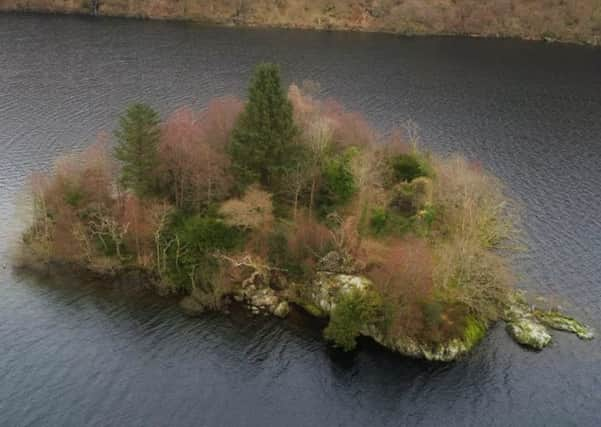The Texan saving 16th century island castle on Loch Lomond


Elanvow, the most northerly island on Loch Lomond, was held by the MacFarlane clan from the 14th century with a castle built there in 1577 by its 14th chief, Andrew.
Bruce McFarlin, a chemical engineer from Houston, first visited Elanvow – also known as Island I Vow – in the early 1990s with his elderly father. He has since been working with local archaeologists and his daughter Katherine, an archaeology student in Chicago, to map the island and the castle remains in order to preserve the ruins for the future.
Advertisement
Hide AdMany hours of hard physical work have gone in to clear the castle from overgrowth and fundraising is now under way to repoint the remains to stop further deterioration of the Scheduled Ancient Monument.
Mr McFarlin, speaking from his home in the United States, said it had been a “very, very personal journey” for the family.
He said: “I first heard of the island when I was relatively young, probably in my teens, from my father who was very interested in his Scottish heritage. In 1994, we went on our first trip to the island, and made several more family trips over the following years. It’s preservation has become a very, very personal project for us now and patience is something we have learned. Elanvow is a very special place.”
James VI is said to have visited the castle, probably a four-storey pile with a tower or turret, following the Battle of Langside in 1586 to thank Andrew MacFarlane for defending the Crown.
While the King enjoyed watching the geese in the water, he did not enjoy the taste of them at dinner, according to accounts.
Elanvow became the temporary seat of the clan in mid 17th century after Cromwell burnt out another island on the loch, Inveruglas.
Advertisement
Hide AdThe MacFarlanes moved to the mainland near the end of the 17th century and abandoned the island sometime in the 18th century.
The castle became a substantial family home but it is unclear when it was last inhabited.
Advertisement
Hide AdPoet William Wordsworth visited the island in early 1800s and wrote the Brownie’s Cell, inspired by the building’s huge vaulted basement, which is sometimes referred to as a dungeon.
Now, the island is considered to be owned by the Squires family of the Ardlui Hotel, although several claims have been made on the property over time.
Mr McFarlin, who has set up the Elanvow Preservation Fund in the US, said his aim was solely to prevent further decay of the island and castle, which is often visited by people on the loch. The work will cost up to £130,000, he said.
He added: “We want to preserve the castle for others to enjoy. We would like a little sign on the beach that informs people of the castle and its history so that it is treated with a bit more reverence and respect. People should enjoy it but sometimes stones are taken from the walls. It really should be left how it is.”
Fiona Baker, of Firat Archaeological Services in Rhu, near Helensburgh, carried out her first survey of the Loch Lomond islands more than 20 years ago and has been working with colleagues in collaboration with Mr McFarlin and his family for a number of years.
She said that around 30 items of archaeological evidence had now been recorded there, including pieces of pottery from the 16th to 17th century.
Advertisement
Hide AdMs Baker said: “We don’t want to make any major interventions at the castle – we just want to make sure it doesn’t fall down. We hope that MacFarlanes all over the world will be able to contribute to the preservation project.”
Historic Environment Scotland and Loch Lomond and Trossachs National Park are continually updated on the project with a final report to be presented later this year.